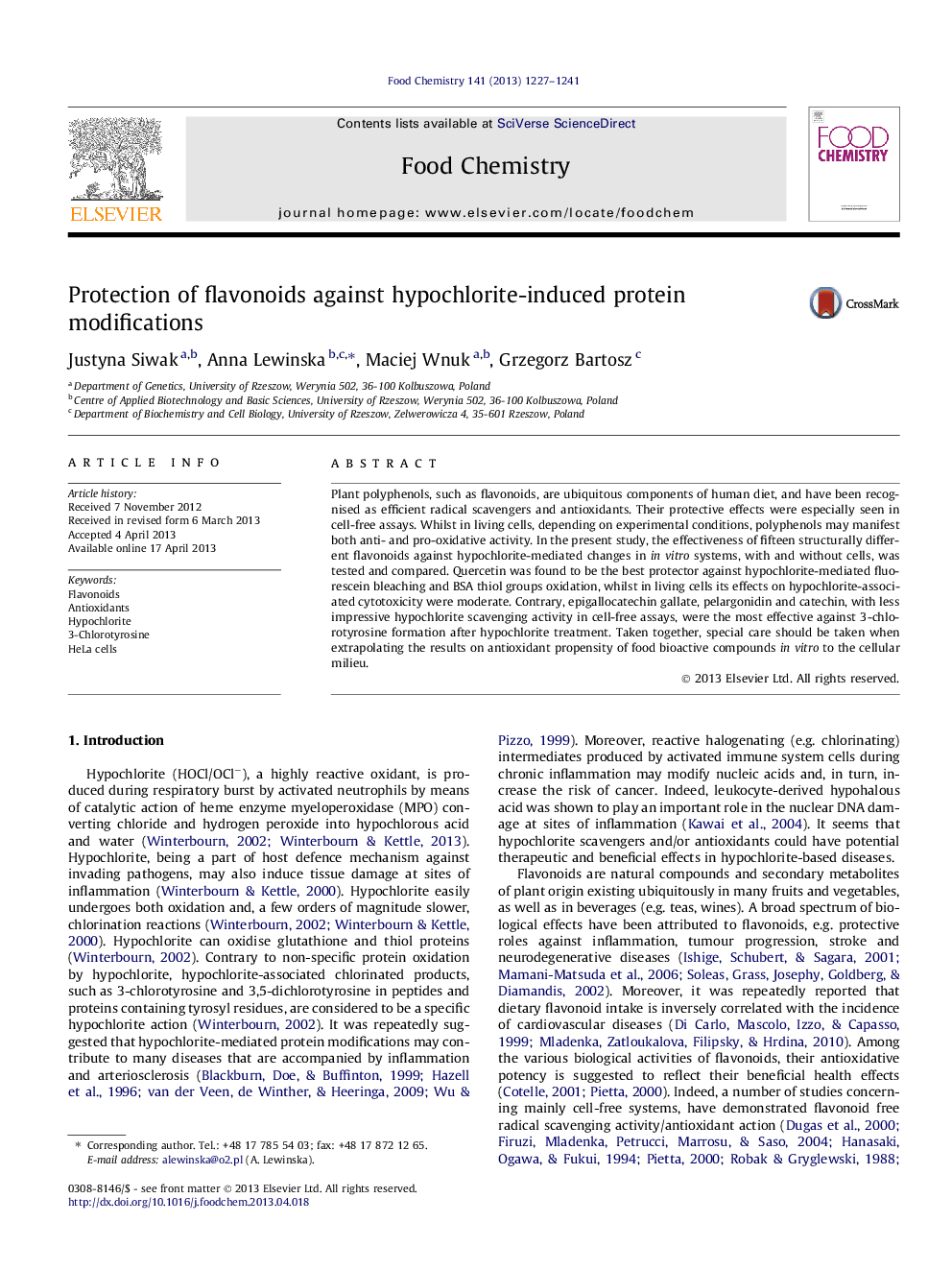| کد مقاله | کد نشریه | سال انتشار | مقاله انگلیسی | نسخه تمام متن |
|---|---|---|---|---|
| 1187150 | 963456 | 2013 | 15 صفحه PDF | دانلود رایگان |

• Quercetin is the best hypochlorite scavenger in pure in vitro systems.
• Catechins protect the most efficiently against hypochlorite in living cells.
• Flavonoids can diminish 3-chlorotyrosine formation after hypochlorite treatment.
Plant polyphenols, such as flavonoids, are ubiquitous components of human diet, and have been recognised as efficient radical scavengers and antioxidants. Their protective effects were especially seen in cell-free assays. Whilst in living cells, depending on experimental conditions, polyphenols may manifest both anti- and pro-oxidative activity. In the present study, the effectiveness of fifteen structurally different flavonoids against hypochlorite-mediated changes in in vitro systems, with and without cells, was tested and compared. Quercetin was found to be the best protector against hypochlorite-mediated fluorescein bleaching and BSA thiol groups oxidation, whilst in living cells its effects on hypochlorite-associated cytotoxicity were moderate. Contrary, epigallocatechin gallate, pelargonidin and catechin, with less impressive hypochlorite scavenging activity in cell-free assays, were the most effective against 3-chlorotyrosine formation after hypochlorite treatment. Taken together, special care should be taken when extrapolating the results on antioxidant propensity of food bioactive compounds in vitro to the cellular milieu.
Journal: Food Chemistry - Volume 141, Issue 2, 15 November 2013, Pages 1227–1241